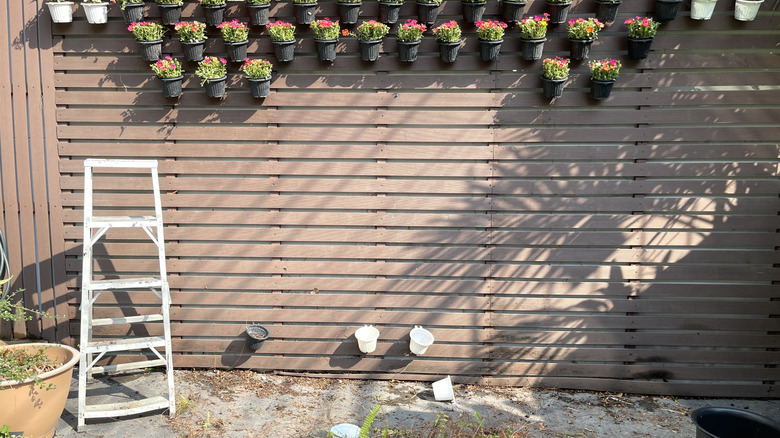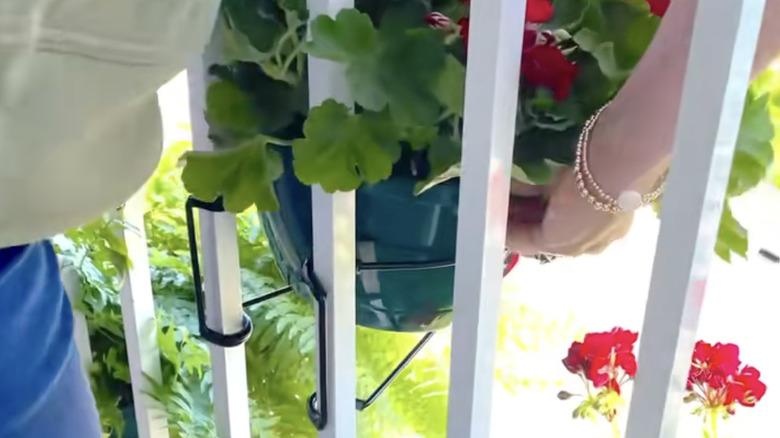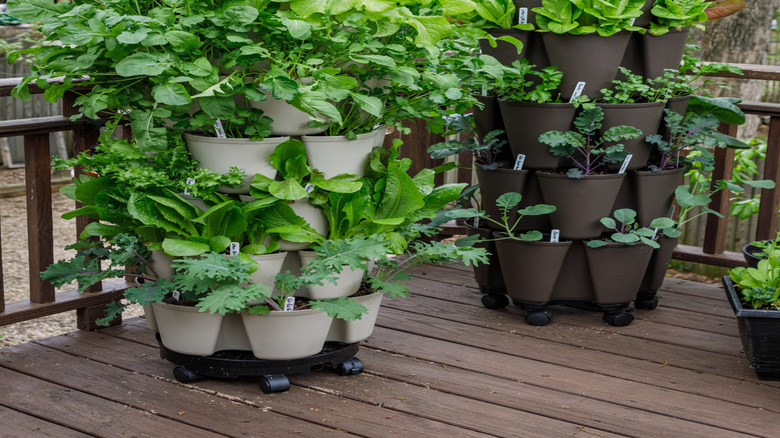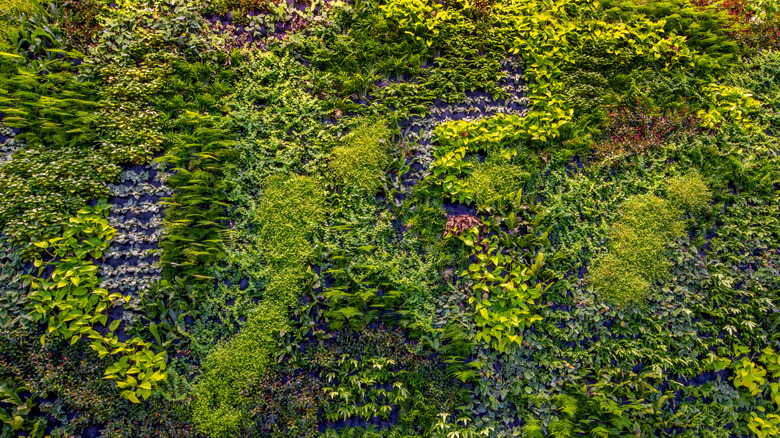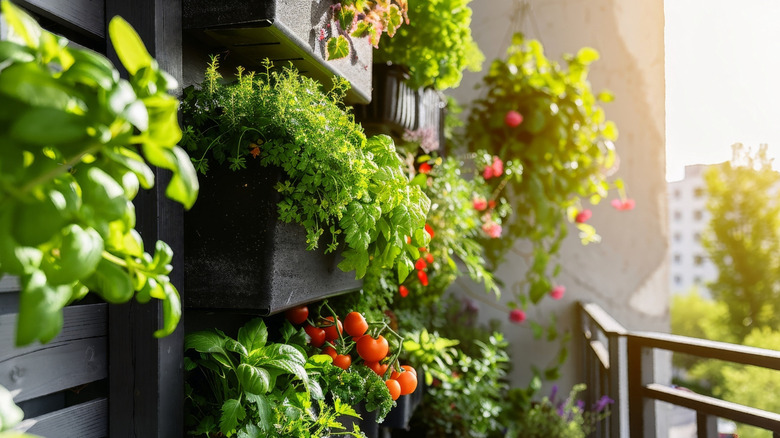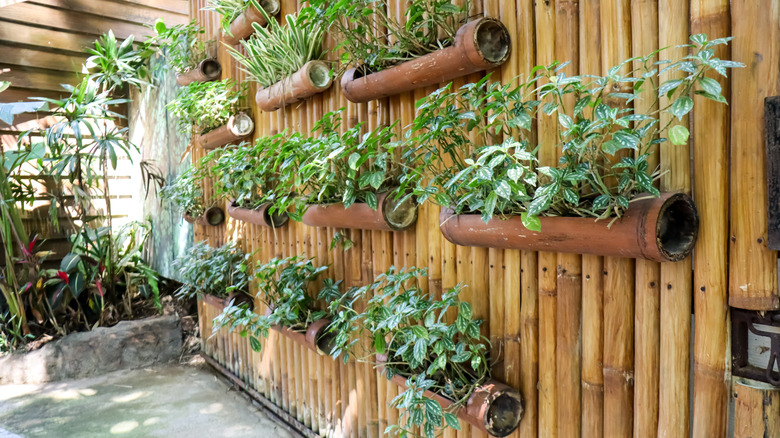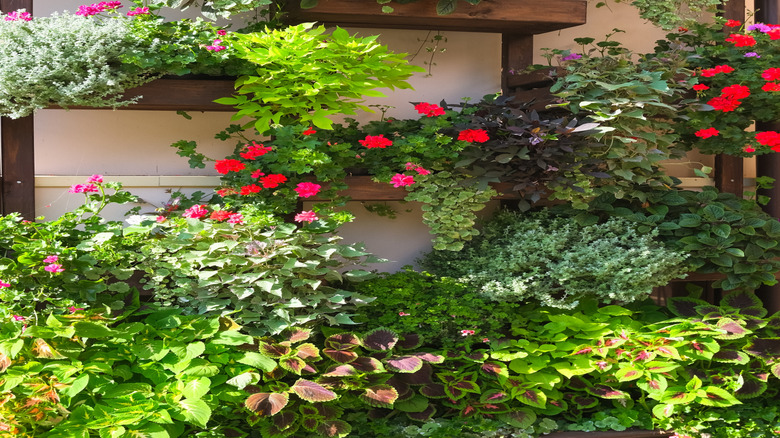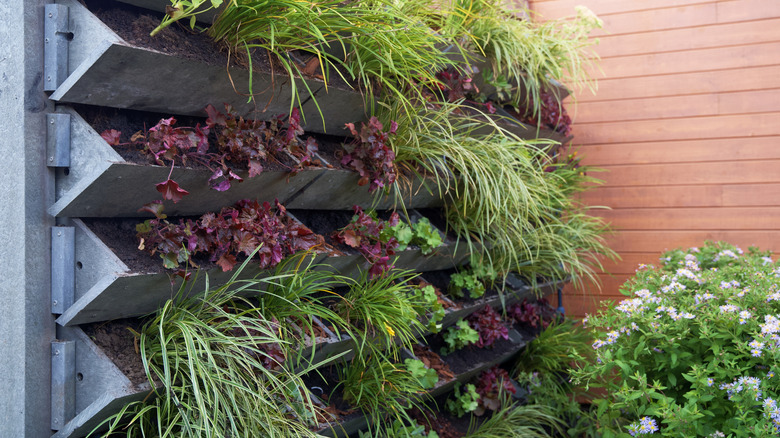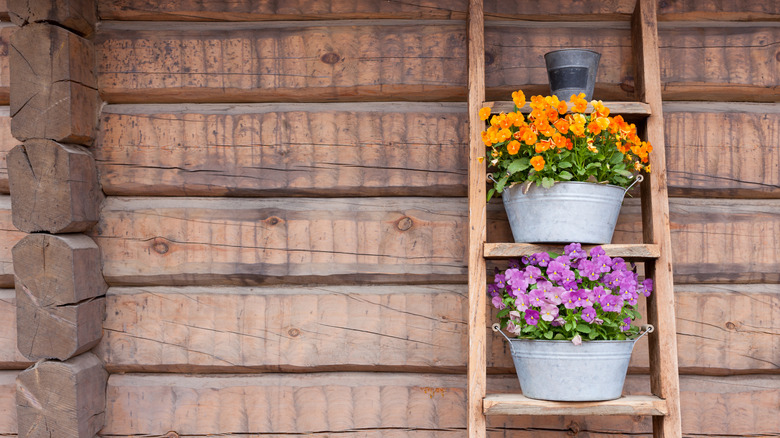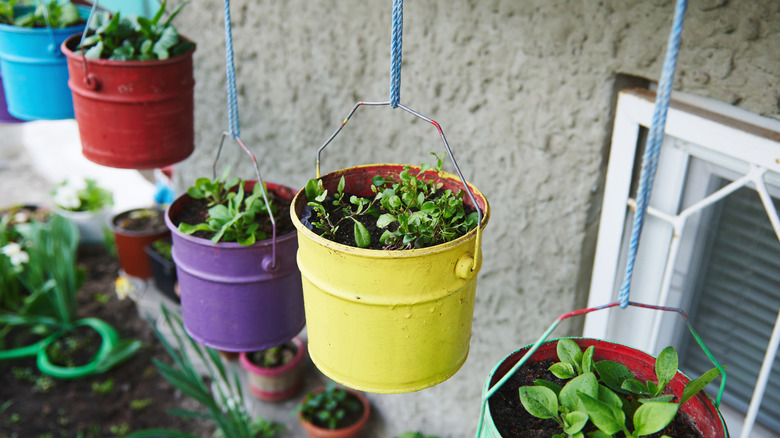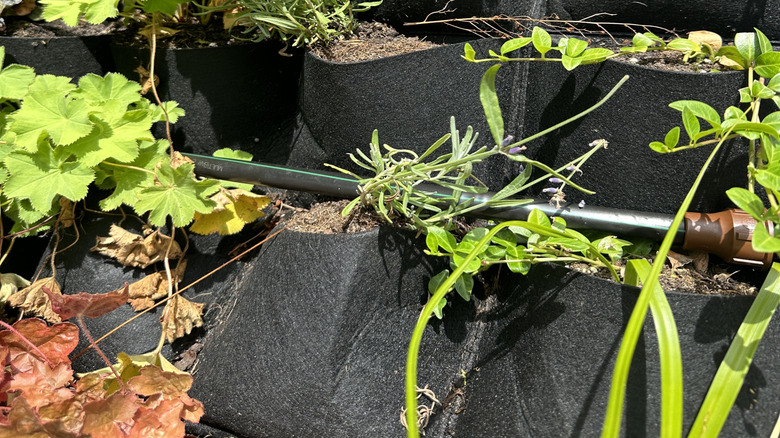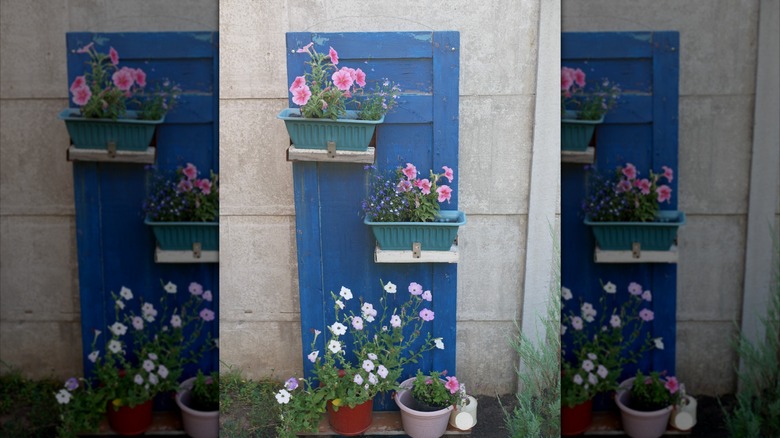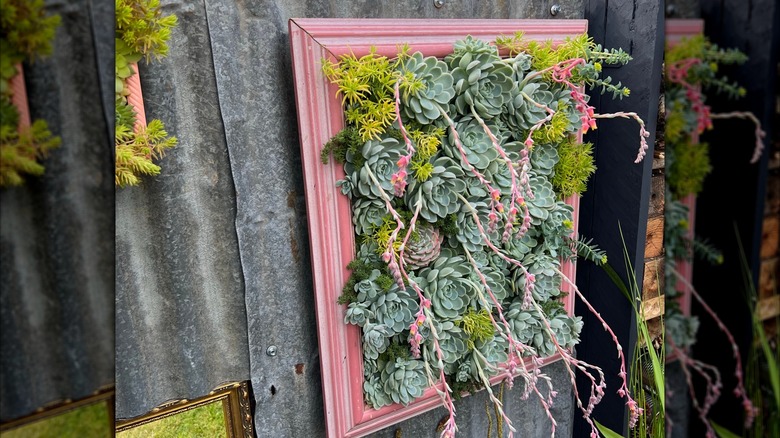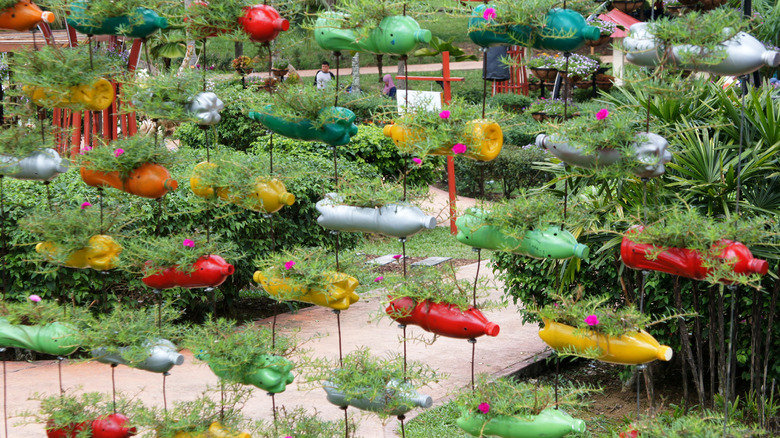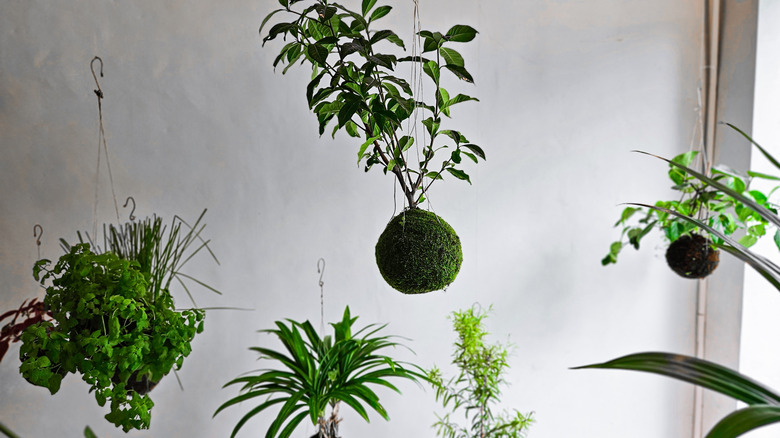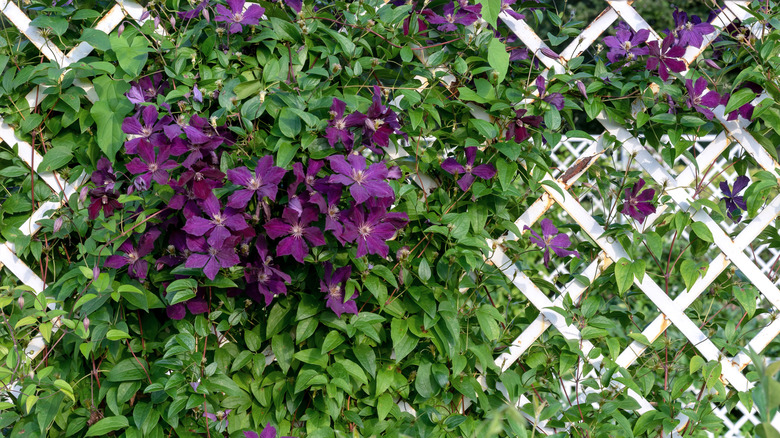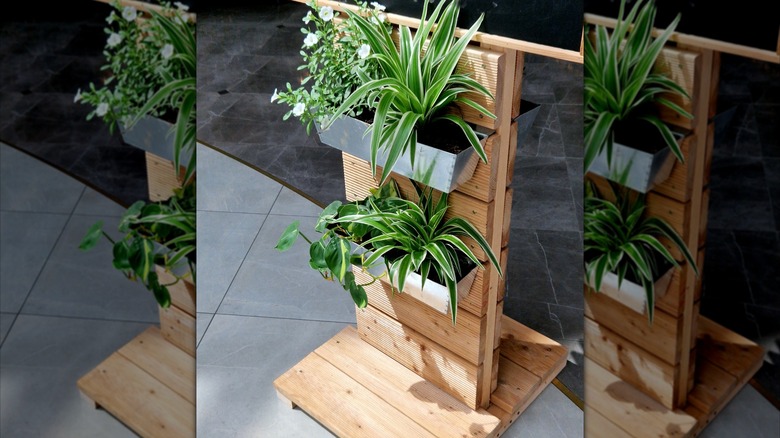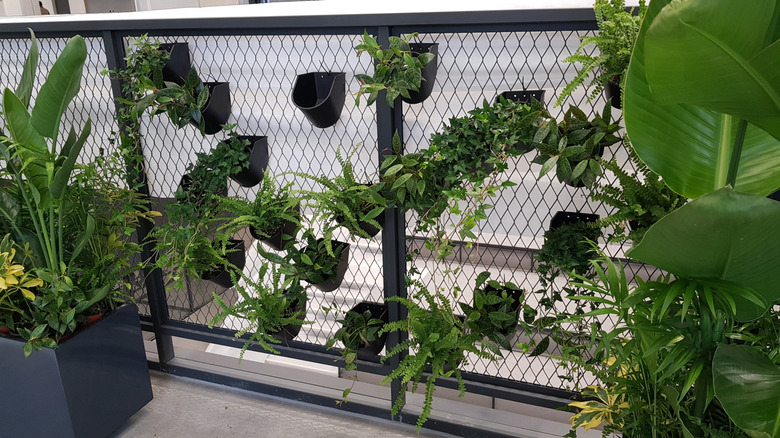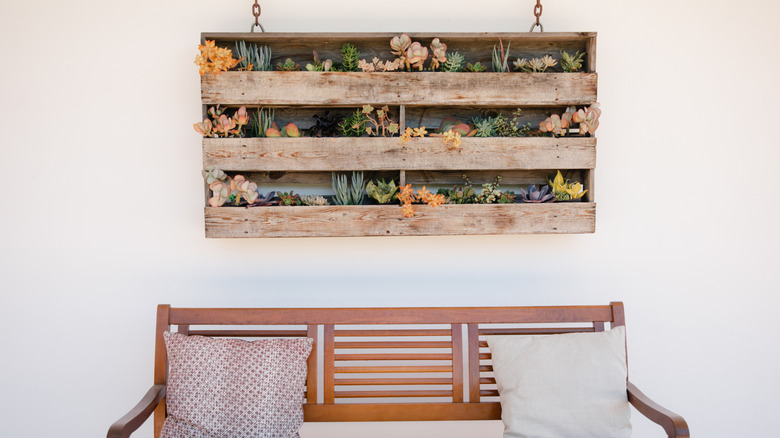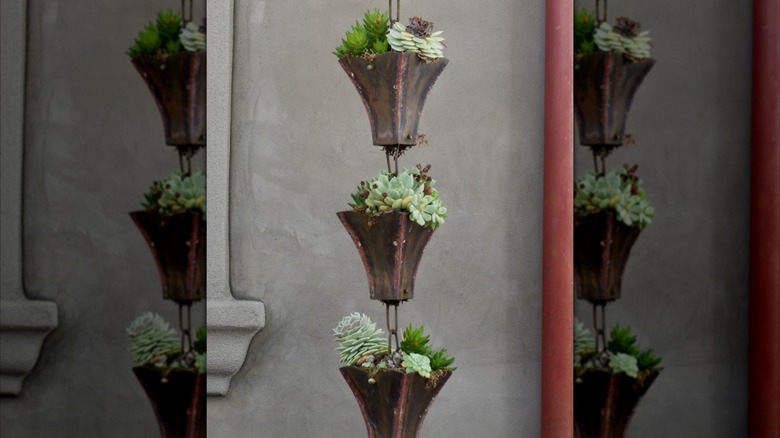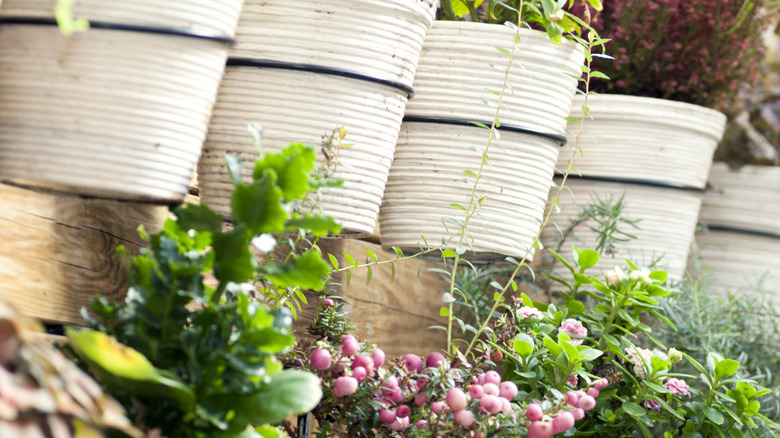Limited Outdoor Space? These 20 Vertical Garden Ideas Are The Perfect Solution
We may receive a commission on purchases made from links.
A vertical garden is a great way to add greenery to your small space, while still letting you fully invest in your gardening practices. Whether you want to grow vegetables, herbs, or flowers, there are plenty of plants that will work in a vertical garden, as long as you choose the right setup for your space. The great thing is, aside from the need to choose plants that grow well in containers, you are only limited by your own style choices. From growing plants in cloth, plastic, or trough-shaped planters hanging on fences and walls to more creative ideas like converting an old door or used pallet into a vertical garden, the ideas are nearly endless.
You also need to consider what types of plants you want to grow in your vertical garden. Designs that include pots attached to a vertical stand, railings, wooden slats, or shelving may be better for a display of container-loving flowers or a culinary herb garden. Keep it near the house or a patio to make the most of the arrangement. Other larger design solutions, like ready-made vertical planters, felt pockets, and the huge assortment of DIY vertical gardens you can craft, work well for shallow-rooted vegetables. You can also grow hardy plants like succulents and cacti or certain flowering vines on living walls or pots mounted to a trellis.
Get plant hangers to attach pots to your porch railings
This is an incredibly simple way to add a vertical garden to any outdoor space, no matter how small. This is the genius plant clip you need to easily turn your greenery into a stunning display. Plant hangers for railings are easy to attach to almost any vertical railings on patios, porches, balconies, or even indoor stairwells. All you have to do is hook the clip over the rungs, then place your potted plant into the hoop.
Use a vertical planter for a ready-made garden
Another easy option is to purchase a ready-made vertical garden from your local garden center or hardware store. These are great for apartments or small yards where you still want to grow a vegetable garden, but don't have room for raised garden beds. You can plant flowers in them, too, for a cascading flower garden. There are several different designs to choose from, including offset circular towers or stacked rectangular planters.
Create an outdoor oasis and enjoy the benefits of a living wall
Any arrangement of plants growing on an external or internal wall could be considered a living wall. They create a fantasy-like vibe and can be tailored for additional benefits, such as filtering water running off a roof or household gray water. Some of the best plants to use to create a stunning living wall indoors include English ivy, anthuriums, ferns, and kris plants, among many others. Structural integrity is vital. If you don't think you can follow one of the many online tutorials, hire a contractor.
Insert planters into the slats of a fence, wall, or pallet
Another relatively simple and customizable option for a vertical garden is to hang planters from slats. You can control pot placement and size for unique designs. You can use a structure you already have, like a fence or wall, so long as it has horizontal wood planks with space between. You could also DIY a solution by nailing horizontal slats to a wood frame or hanging a pallet on the wall. Hang Black Iron Over-The-Rail Flower Pot Holders from the slats.
Fill hollow bamboo canes with soil for natural vertical planters
Create your very own Zen garden by using bamboo to make trough-style planters. All you need are 3.5- to 4-inch-diameter (or wider) Natural Bamboo Poles that you cut down to size lengthwise, hollow out, and seal at each end. Attach them horizontally to the wall using hooks or screws and fill the hollow with potting mix and plants. If you have plants with deep roots, make and hang a few vertical bamboo planters, too.
Turn wooden crates in a tall frame into outdoor planter shelving
Using any type of wood, build a simple frame that fits the wall you've designated for your garden. Then screw wooden crates to it to create planter boxes or shelves. This option is highly customizable since you can build the frame any size you wish and vary the boxes based on what you can find. Plant directly into the crates or use them to house flower pots. You can even craft floating shelves for a sleek or discreet vertical garden display.
Install vertical angled trough planters for natural drainage
Angled trough planters are the perfect option for vertical garden beginners, especially if you want a low-maintenance setup. The troughs are stacked at an angle, promoting efficient drainage. When you water the plants at the top, it trickles down into the troughs below, taking some nutrients with it. Connect a covered balcony garden to your stormwater system and use the rain to water your plants. This style of vertical garden looks best planted with vining vegetables or flowers that spill out as they grow.
Use a ladder shelf as a plant holder
Instead of creating a beautiful storage solution with this easy-to-follow DIY ladder shelf, use the same idea for vertical planting. Open it out in your garden and pop a flower pot, large or small, onto each rung. If the ladder isn't an A-frame or step ladder, simply lean it against the wall. The idea saves space in a small garden and there are plenty of different styles of ladder shelves out there with varying widths and heights that can work in any space and with most plants.
Suspend planted buckets from wire or string
If you want a cute vertical garden, try hanging some buckets from your patio rafters. This simple idea elevates your outdoor space the minute you add flowers to the upcycled containers. All you need is a set of six Mumufy 1 Quart Stainless Steel Flat Side Buckets; a roll of thick string, wire, or chain; and, if you wish, some weatherproof, non-toxic paint. Paint the buckets to match your outdoor space using solid colors or creative patterns. Or leave them plain. Add potting mix and seeds or seedlings, and hang them up.
Keep it simple with wall-mounted felt pockets for plants
Felt pocket planters are another simple vertical gardening solution that you can use to grow plants in almost any sized space. All you need is a wall. These fabric planters look like a hanging shoe organizer, but they are actually designed to hold plants. They come in an array of pocket sizes and numbers. You can use them for shallow-rooted vegetables like lettuce, green onions, and spinach; dry-loving herbs like oregano, marjoram, or thyme; or hardy succulents.
Convert old doors into plant stands
If you are trying to channel more of a shabby chic look outdoors, consider creating a vertical plant stand from an old wooden door. There are several ways to do this. The simplest option is to screw or nail small shelves to the door and secure plant pots to them using metal brackets. If the door has a window frame, remove the glass and suspend hanging plants from the grilles. If you wish, finish the door with a weatherproof, non-toxic paint to match your garden's color scheme.
Plant succulents in a picture frame
Plant succulents in a picture frame to create a mini living wall. Start with a frame you like the look of that measures about 18 by 24 inches with a depth of about 2 inches and a sturdy backing. Pack the frame with a quick-draining soil and fit wire mesh to the inside. Carefully push succulent cuttings through the holes of the mesh and into the soil. Sit the frame on a table or other flat surface for a few weeks to allow the cuttings to grow roots. Then, hang it on a wall.
Secure empty soda bottles to the wall for plants
You can create the vertical garden of your dreams with an empty bottle hack. Just like the bamboo plant holders, you can turn old plastic bottles into planters by cutting a hole in the side, nailing or screwing them to a wall or fence, and filling them with soil and plants. This idea is best for plants that stay small and don't need a lot of root space. Choose cascading plants to hide the plastic bottles or paint them whatever colors you prefer.
Create a floating garden with Japanese moss balls
Japanese moss balls can make your space feel truly magical, plus you can grow plants without a pot. Making moss balls or kokedama is as much art as it is gardening. Roll a ball from dense clay soil and live moss. Then, create a hole in the top of the ball and pop in a seedling that tolerates dense, damp soil. Fill the hole with more soil to hold the plant in place. Create lots of kokedama and suspend them from the ceiling using string to create a floating garden.
Use a trellis to grow climbing plants
A tried and true solution for vertical gardening is planting a climber or vine in front of a trellis and training it to grow up it. There is a wide range of trellis styles to fit any outdoor aesthetic, from Besportble White Lattice Fencing to a highly decorative Arifaro Metal Climbing Plant Trellis. Use single panels to grow flowering vines that will keep hummingbirds coming back to your yard or climbing vegetables like beans. Alternatively, try a trellis arch to create a walk-through vertical garden.
Build a self-supporting vertical planter stand
For a unique vertical garden solution, you can custom-build a self-supporting planter stand. Most people use wood for these stands, either new or upcycled. However, you can also DIY a vertical vegetable garden using PVC piping. Both ideas are a good option for small gardens without fencing, railings, or walls to hang planters from. They're also perfect for gardeners who are renters. Plus, by building the stand yourself, you get to create something that fits your style and your space perfectly.
Make use of your fence to hang small plant pots
Got a chainlink fence? Use it to create a vertical garden in your backyard by hanging small pots with hooks from the wire mesh. Technically, you can use any size of pot, but for chainlink or wire fencing, smaller, lighter planters may be the safest bet. You can also hang pots from wooden fences, but that might require additional work — screwing them to the fence or screwing hooks to the wood to hold them in place. That's fine for homeowners, but may not work for renters.
Convert wood pallets into wall-mounted planters
A popular vertical gardening idea is to make a wall-mounted planter from an upcycled wood pallet. The method is similar to the free-standing vertical planter above in that you can customize it to fit your style and space. However, the pallet planter is hung on the wall to maximize growing space. If you're lucky, you can get your pallet for free, making this DIY really affordable. Use your wall-mounted wood pallet planter for herbs or diminutive flowering plants that don't require a lot of room for roots.
Upcycle thrifted items into a tiered hanging vertical garden
This is a fun project for any DIYer who loves thrifting. It's relatively simple, too. Find two or three similar sturdy, lightweight items that could work as planters — think lampshades, vases, or baskets. These will form the pots in your tiered hanging vertical garden. Then, thread them upside down (the wide opening should face upwards) onto a length of chain, securing each basket in place with enough space between them to fill them with soil and plants. That's it!
Hang plant pots on a wall with metal ring brackets
Love planters made from classic yet heavy materials like terracotta? Use metal ring brackets to create a vertical garden without compromising on style. There is a wide range of metal ring brackets for planters. The simplest option, and one we've mentioned already, has hooks behind the ring. They work best for slatted walls or fences. There are also rings with strong brackets that you can screw into a wall, which are great for ceramic planters.
